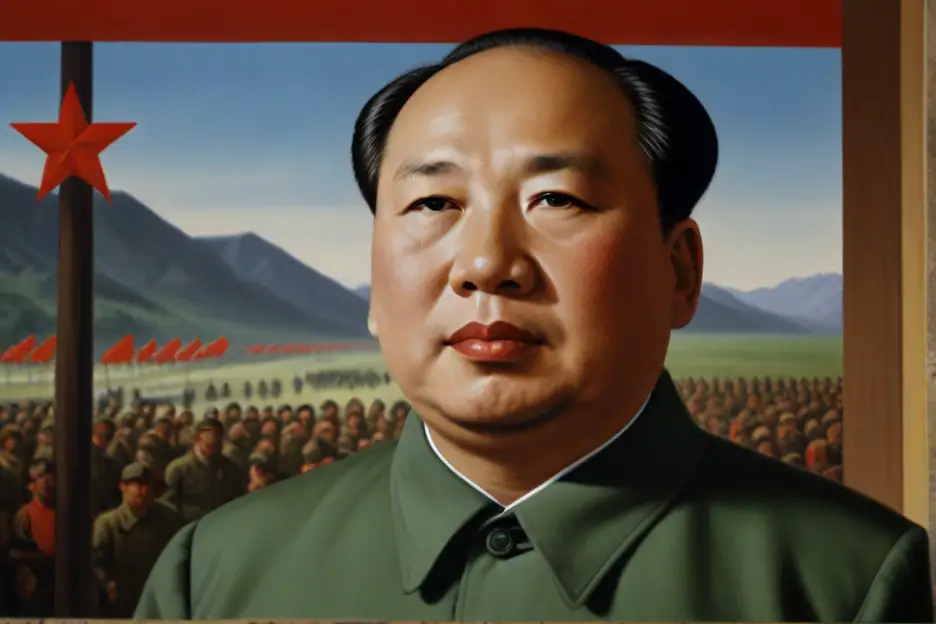
The Cold War, a period of geopolitical tension between the United States and the Soviet Union from 1945 to 1991, was marked by significant events, policies, and figures that shaped the era.
This article will explore the key leaders, spies, and activists who played crucial roles in shaping the Cold War landscape.
Leaders
Dwight D. Eisenhower (USA)

Dwight D. Eisenhower wasn’t just any president – he was a war hero turned commander-in-chief.
Before leading the nation from 1953 to 1961, he played a pivotal role in World War II, earning his stripes as a military mastermind.
When he stepped into the Oval Office, he brought that same strategic brilliance to the table.
During his presidency, Eisenhower faced a world in the grip of the Cold War – a tense standoff between the United States and the Soviet Union.
His foreign policy playbook? Containment – a strategy aimed at keeping the spread of communism in check.
It was like playing a high-stakes game of chess on the global stage, with Eisenhower making all the right moves to ensure America stayed ahead of the game.
- Read also: Who Started the Cold War? A Look at the Beginning of a Tense Era
- Read also: Divided World: Key Events of the Cold War
Nikita Khrushchev (USSR)
In the Soviet Union, Nikita Khrushchev was the man with the plan.
As the First Secretary of the Communist Party from 1953 to 1964, he set out to shake things up with his de-Stalinization policies.
It was time for a fresh start, a chance to reform the Soviet Union and mend fences with the West.
But then came the Cuban Missile Crisis – a moment that would define Khrushchev’s legacy.
His decision to stash nuclear missiles in Cuba in 1962 sent shockwaves around the world, pushing the United States and the Soviet Union to the brink of nuclear war.
It was a high-stakes game of brinkmanship, with Khrushchev ultimately blinking first and agreeing to dismantle the missile sites.
Crisis averted – but tensions remained high.
John F. Kennedy (USA)
The fresh-faced president with a vision for a bold new frontier.
From 1961 to 1963, he led the charge with his “New Frontier” policies, aiming to propel the United States to new heights both at home and abroad.
It was a time of great promise and peril, with Kennedy at the helm.
But the Cold War cast a long shadow over Kennedy’s presidency.
The Cuban Missile Crisis tested his mettle like never before, as he stood toe-to-toe with Khrushchev in a battle of wills.
Kennedy’s cool-headed diplomacy and unwavering resolve helped defuse the crisis, earning him a place in the history books as a true Cold War hero.
Margaret Thatcher (UK)

Margaret Thatcher wasn’t just any prime minister – she was the “Iron Lady” of the United Kingdom, a force to be reckoned with on the global stage.
From 1979 to 1990, she led her country with an unwavering commitment to freedom and democracy, standing firm against the tide of communism.
Thatcher’s anti-communist stance wasn’t just talk – it was action.
During her tenure, she showed her mettle during the Falklands War, a conflict that pitted the UK against Argentina over the sovereignty of the Falkland Islands.
Thatcher’s resolute leadership helped secure victory for her country and sent a clear message to the world: the UK would not back down in the face of aggression.
Mao Zedong (China)
In the East, another figure was making waves – Mao Zedong, the Chairman of the Communist Party of China.
From 1943 to 1976, Mao led China down the path of communism, forever altering the global balance of power.
Mao’s policies, like the Great Leap Forward and the Cultural Revolution, transformed China from a struggling nation into a communist powerhouse.
But these policies came at a great cost, with millions of lives lost and untold suffering inflicted on the Chinese people.
Mao’s death in 1976 marked the end of an era, but his legacy lived on, shaping Chinese politics and the global landscape for decades to come.
Winston Churchill (UK)
Winston Churchill – a name synonymous with courage, resilience, and leadership.
As Prime Minister of the United Kingdom during World War II and again from 1951 to 1955, Churchill was a towering figure in the early years of the Cold War.
Churchill’s leadership during World War II helped rally the Allied forces against the Axis powers, laying the groundwork for victory in Europe.
But his commitment to the cause didn’t end with the war – Churchill remained a steadfast ally of the United States during the Cold War, working tirelessly to strengthen the bonds between the UK and its transatlantic partner.
Joseph Stalin (USSR)
Joseph Stalin – the man who turned the Soviet Union into a global superpower.
As General Secretary of the Communist Party from 1922 to 1953, Stalin wielded immense power and influence, shaping the course of history in the early years of the Cold War.
Stalin’s policies, like the Great Purge and the Soviet occupation of Eastern Europe, helped solidify Soviet control over vast swathes of territory.
But his iron-fisted rule came at a great cost, with millions of lives lost to repression and violence.
Spies
Kim Philby (UK)

Kim Philby was no ordinary spy – he was the “Third Man,” a high-level British intelligence officer who betrayed his country to work for the KGB, the Soviet Union’s intelligence agency.
Philby’s double life sent shockwaves through the corridors of power in the United Kingdom and the United States, making him one of the most notorious turncoats of the Cold War.
Philby’s infiltration of British intelligence was a masterstroke of deception.
As a trusted insider, he had access to top-secret information that he passed on to his Soviet handlers, compromising countless operations and putting lives at risk.
His betrayal had far-reaching consequences, shaking the foundations of trust and security on both sides of the Atlantic.
Rudolf Abel (USSR)
In the heart of America, another figure lurked in the shadows – Rudolf Abel, a Soviet spymaster operating undercover in the United States.
Abel was a master of espionage, running a network of agents tasked with gathering intelligence on America’s military and political secrets.
But Abel’s luck ran out in 1957 when he was captured by the FBI, marking the end of his reign of secrecy.
His subsequent trial was a sensation, shining a spotlight on the extent of Soviet espionage in the United States and exposing the vulnerabilities of America’s security apparatus.
Activists
Andrei Sakharov (USSR)

Andrei Sakharov wasn’t your average Soviet physicist.
Sure, he was brilliant in the lab, but he was also a fierce advocate for peace and human rights.
Sakharov saw firsthand the destructive power of nuclear weapons and became a vocal critic of the arms race.
His bold stance against nuclear proliferation and his calls for disarmament made him a thorn in the side of the Soviet government, but he refused to stay silent.
Despite facing persecution and exile, Sakharov remained steadfast in his commitment to building a safer world for future generations.
Lech Wałęsa (Poland)
In the heart of communist Poland, Lech Wałęsa emerged as a champion for workers’ rights and democracy.
As a shipyard electrician, Wałęsa led the charge in founding the Solidarity movement, a trade union that challenged the oppressive communist regime.
His leadership and courage galvanized millions of Poles to stand up against tyranny and demand freedom. Despite facing imprisonment and persecution, Wałęsa’s determination never wavered.
His efforts paved the way for Poland’s transition to democracy and earned him international acclaim as a symbol of resistance against communist rule.
Angela Davis (USA)
In the United States, Angela Davis was a fierce advocate for civil rights and social justice.
As a Black woman living in a racially divided society, Davis experienced firsthand the injustices of systemic racism.
She became a prominent voice in the civil rights movement, advocating for equality and challenging the status quo.
Davis was also a vocal critic of the Vietnam War, speaking out against US military intervention and calling for peace.
Despite facing government persecution and being labeled a “dangerous radical,” Davis continued to fight for a more just and equitable society.
- Read also: Understanding the Differences: World War I Vs World War II
- Read also: A Battlefield Guide: Exploring the Major Battles of World War I
Conclusion
The Cold War was a complex and multifaceted era marked by significant events, policies, and figures.
This article has explored the key leaders, spies, and activists who played crucial roles in shaping the era.
From the leaders who navigated the early years of the Cold War to the spies who worked to undermine the United States and the Soviet Union, each of these figures played a significant role in shaping the era.


